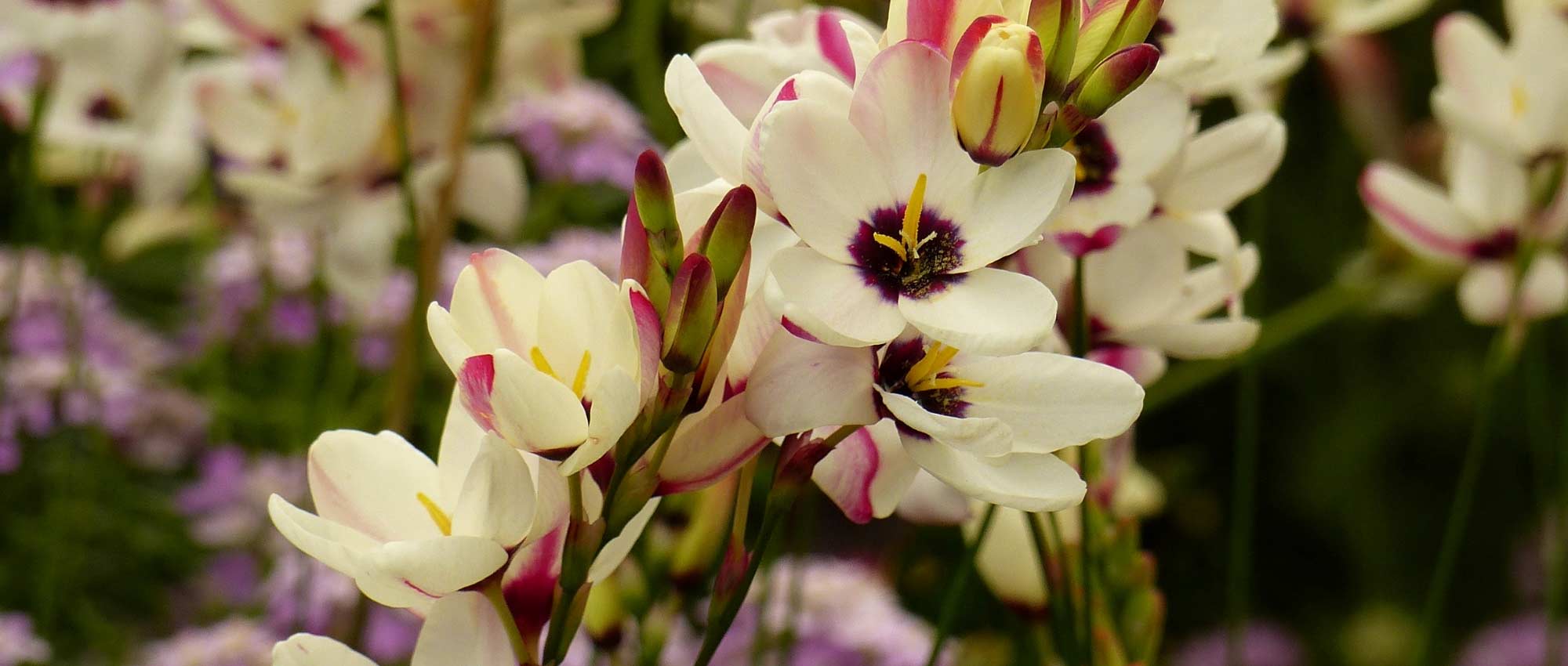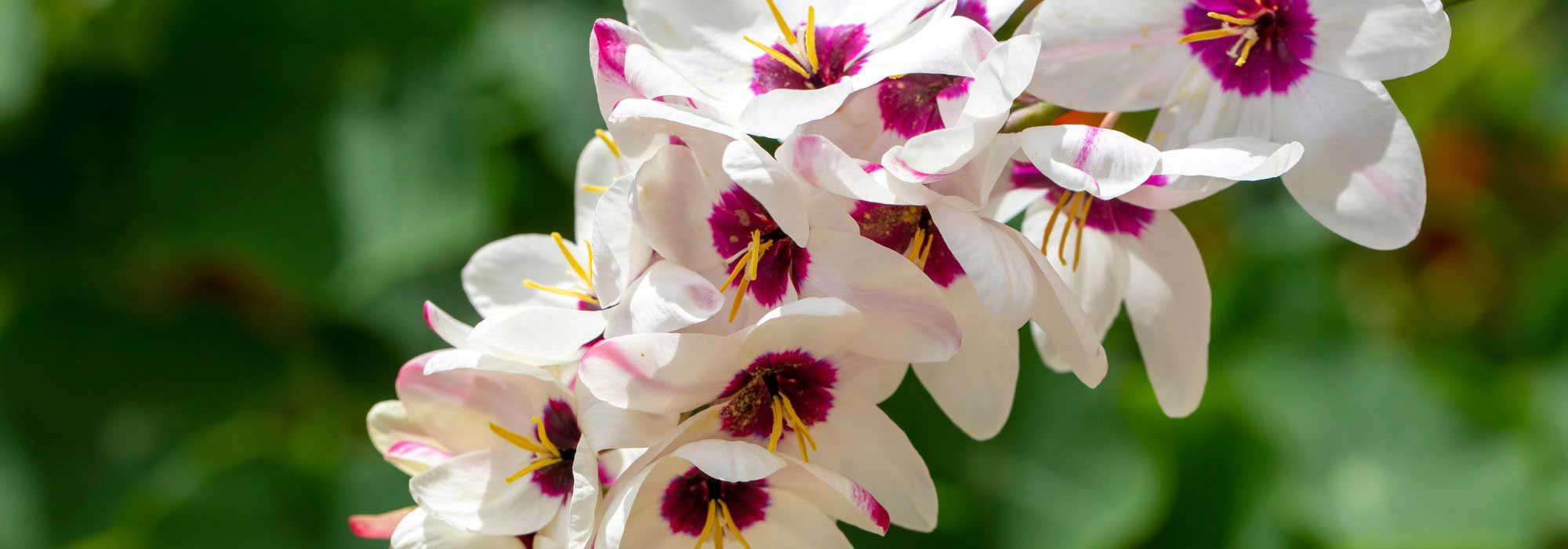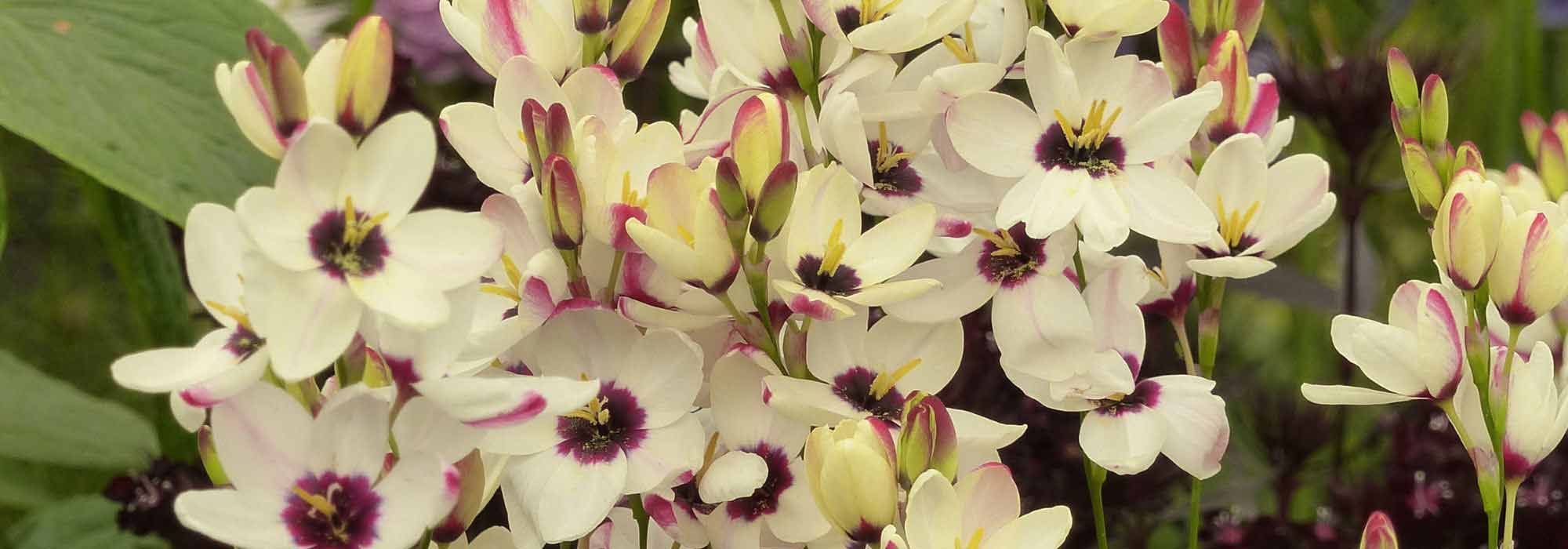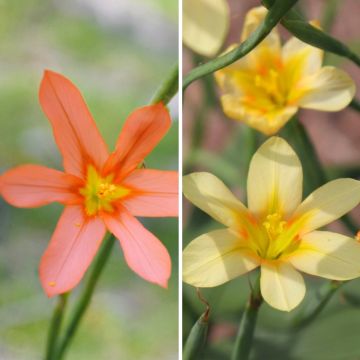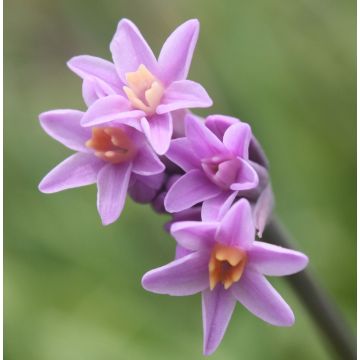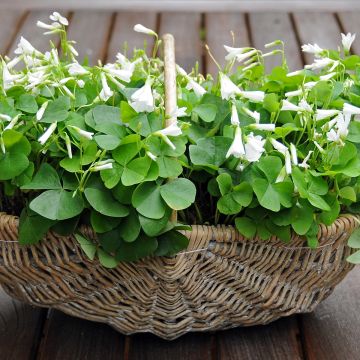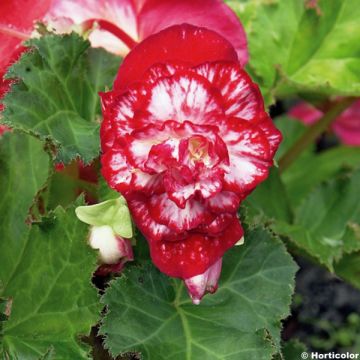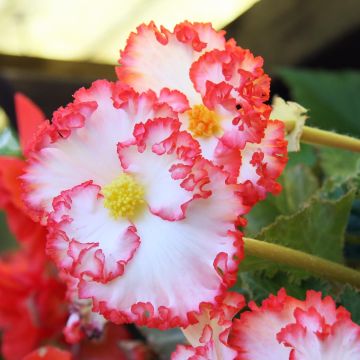

Ixia Mabel - Corn lily
Ixia Mabel - Corn lily
Ixia Mabel
Corn Lily, African Corn Lily
Special offer!
Receive a €20 voucher for any order over €90 (excluding delivery costs, credit notes, and plastic-free options)!
1- Add your favorite plants to your cart.
2- Once you have reached €90, confirm your order (you can even choose the delivery date!).
3- As soon as your order is shipped, you will receive an email containing your voucher code, valid for 3 months (90 days).
Your voucher is unique and can only be used once, for any order with a minimum value of €20, excluding delivery costs.
Can be combined with other current offers, non-divisible and non-refundable.
Home or relay delivery (depending on size and destination)
Schedule delivery date,
and select date in basket
This plant carries a 6 months recovery warranty
More information
We guarantee the quality of our plants for a full growing cycle, and will replace at our expense any plant that fails to recover under normal climatic and planting conditions.
Would this plant suit my garden?
Set up your Plantfit profile →
Description
Ixia Mabel is a variety of Corn Lily that stands tall to attract attention at the Chelsea Flower Show. It captivates with its large, intense and bright pink-purple flowering spikes. The numerous star-shaped corollas cluster like foliage around thin and elegant stems, which disappear under the flowers in June-July. It is a semi-hardy perennial plant with a corm which naturalises easily in mild climates and deserves a prominent place in Mediterranean or coastal gardens. It looks stunning in pots or planted densely in flower beds. Its sturdy stems produce abundant, beautiful cut flowers.
Ixias are deciduous perennial plants with corms, native to South Africa. They are close relatives of Garden Iris and belong to the large family of Iridaceae. Ixia Mabel forms a clump of 6 leaves in spring, usually bright green, long and slender, alternate and sword-shaped. Its growth is rapid. The deciduous foliage normally disappears at the end of summer, but can persist in mild climates during winter. The thin and rigid flowering stems reach 80-90 cm (32-35in) high under good conditions and emerge between two fan-shaped leaves in June. Flowering occurs from late June to late August, in the form of spikes with a minimum of 12 flowers, 5 cm (2in) in diameter, in the shape of starry cups with a tubular corolla formed by 6 fused petals. The 'petals' are a very vivid intense pink-purple, slightly lighter in the centre of the petals. This pink is enhanced by a very dark spot in the centre. The brown and fibrous corm (2.5 cm (1in) in diameter) of this plant is semi-hardy, it withstands moderately cold temperatures (between -5°C (23°F) and -10°C (14°F)).
The flowers of Ixia Mabel only open when there is sunlight. They should be planted in sunny borders or meadow-like flower beds, except in southern regions where the sun would scorch them, in light and well-drained soil. They prefer an open, sunny and sheltered location and well-drained, rocky or sandy soils which are moist in spring and autumn and dry in summer. You can plant them directly in pure sand where their hardiness will be even better. Ixias pair well with late-flowering spring bulbs such as giant allium, arum, eremurus and white lilies. In rock gardens, they bring a delicate and brilliant touch with catmints, stipa, and pennisetums. They are perfect plants for containers and pots where you can enjoy their magnificent flowering up close and protect them from severe winter frosts. Finally, they are excellent flowers for cutting.
Ixia Mabel - Corn lily in pictures


Plant habit
Flowering
Foliage
Botanical data
Ixia
Mabel
Iridaceae
Corn Lily, African Corn Lily
Cultivar or hybrid
Planting and care
Plant Ixia Mabel bulbs in autumn, in groups of 8 or 10 arranged in a staggered pattern, in a mixture of sand, leaf compost and ordinary soil. The substrate should be permeable and lightweight, but fertile. Planting in the ground in autumn is only possible in regions with mild winters, by protecting the bed with a thick layer of dry leaves. Use the same substrate in pots, adding bonemeal or other organic fertiliser to support flowering. Place the pots in a frost-free and rain-sheltered area during winter. Once shoots appear, move the pots to a bright and slightly heated room. When frost is no longer a concern, place your containers outside in the sun. As the summer heat arrives, water more generously to support flowering. After flowering, the bulbs should be kept dry until autumn.
Planting period
Intended location
Care
Planting & care advice
This item has not been reviewed yet - be the first to leave a review about it.
Similar products
Haven't found what you were looking for?
Hardiness is the lowest winter temperature a plant can endure without suffering serious damage or even dying. However, hardiness is affected by location (a sheltered area, such as a patio), protection (winter cover) and soil type (hardiness is improved by well-drained soil).

Photo Sharing Terms & Conditions
In order to encourage gardeners to interact and share their experiences, Promesse de fleurs offers various media enabling content to be uploaded onto its Site - in particular via the ‘Photo sharing’ module.
The User agrees to refrain from:
- Posting any content that is illegal, prejudicial, insulting, racist, inciteful to hatred, revisionist, contrary to public decency, that infringes on privacy or on the privacy rights of third parties, in particular the publicity rights of persons and goods, intellectual property rights, or the right to privacy.
- Submitting content on behalf of a third party;
- Impersonate the identity of a third party and/or publish any personal information about a third party;
In general, the User undertakes to refrain from any unethical behaviour.
All Content (in particular text, comments, files, images, photos, videos, creative works, etc.), which may be subject to property or intellectual property rights, image or other private rights, shall remain the property of the User, subject to the limited rights granted by the terms of the licence granted by Promesse de fleurs as stated below. Users are at liberty to publish or not to publish such Content on the Site, notably via the ‘Photo Sharing’ facility, and accept that this Content shall be made public and freely accessible, notably on the Internet.
Users further acknowledge, undertake to have ,and guarantee that they hold all necessary rights and permissions to publish such material on the Site, in particular with regard to the legislation in force pertaining to any privacy, property, intellectual property, image, or contractual rights, or rights of any other nature. By publishing such Content on the Site, Users acknowledge accepting full liability as publishers of the Content within the meaning of the law, and grant Promesse de fleurs, free of charge, an inclusive, worldwide licence for the said Content for the entire duration of its publication, including all reproduction, representation, up/downloading, displaying, performing, transmission, and storage rights.
Users also grant permission for their name to be linked to the Content and accept that this link may not always be made available.
By engaging in posting material, Users consent to their Content becoming automatically accessible on the Internet, in particular on other sites and/or blogs and/or web pages of the Promesse de fleurs site, including in particular social pages and the Promesse de fleurs catalogue.
Users may secure the removal of entrusted content free of charge by issuing a simple request via our contact form.
The flowering period indicated on our website applies to countries and regions located in USDA zone 8 (France, the United Kingdom, Ireland, the Netherlands, etc.)
It will vary according to where you live:
- In zones 9 to 10 (Italy, Spain, Greece, etc.), flowering will occur about 2 to 4 weeks earlier.
- In zones 6 to 7 (Germany, Poland, Slovenia, and lower mountainous regions), flowering will be delayed by 2 to 3 weeks.
- In zone 5 (Central Europe, Scandinavia), blooming will be delayed by 3 to 5 weeks.
In temperate climates, pruning of spring-flowering shrubs (forsythia, spireas, etc.) should be done just after flowering.
Pruning of summer-flowering shrubs (Indian Lilac, Perovskia, etc.) can be done in winter or spring.
In cold regions as well as with frost-sensitive plants, avoid pruning too early when severe frosts may still occur.
The planting period indicated on our website applies to countries and regions located in USDA zone 8 (France, United Kingdom, Ireland, Netherlands).
It will vary according to where you live:
- In Mediterranean zones (Marseille, Madrid, Milan, etc.), autumn and winter are the best planting periods.
- In continental zones (Strasbourg, Munich, Vienna, etc.), delay planting by 2 to 3 weeks in spring and bring it forward by 2 to 4 weeks in autumn.
- In mountainous regions (the Alps, Pyrenees, Carpathians, etc.), it is best to plant in late spring (May-June) or late summer (August-September).
The harvesting period indicated on our website applies to countries and regions in USDA zone 8 (France, England, Ireland, the Netherlands).
In colder areas (Scandinavia, Poland, Austria...) fruit and vegetable harvests are likely to be delayed by 3-4 weeks.
In warmer areas (Italy, Spain, Greece, etc.), harvesting will probably take place earlier, depending on weather conditions.
The sowing periods indicated on our website apply to countries and regions within USDA Zone 8 (France, UK, Ireland, Netherlands).
In colder areas (Scandinavia, Poland, Austria...), delay any outdoor sowing by 3-4 weeks, or sow under glass.
In warmer climes (Italy, Spain, Greece, etc.), bring outdoor sowing forward by a few weeks.






























